One of the worst feelings in the world can happen when setting up your RV at your long-awaited campsite, only to find that something’s wrong with the propane system.
It might be a gas range that won’t light, a water heater with a dead pilot light, or an RV refrigerator that will only draw from the electrical system.
Fortunately, when an RV’s propane system stops flowing, it’s usually pretty easy to troubleshoot. You will just need to take a thorough, and meticulous approach to find the underlying problem. The following steps might help you find one of the common culprits.
- 1. Check the propane tank to make sure the primary valve is on.
- 2. Doublecheck the excess flow valve.
- 3. Check the pressure regulator in the mainline.
- 4. Make sure that the motorhome’s interior propane detector is still in the “On” position.
There are some finer points to each of these common RV propane system problems.
In this article, we’ll take a closer look at what can interrupt the flow of propane, how to diagnose them, and how to fix them.
Check The Propane Tank To Make Sure The Primary Valve Is Fully Open
This is one of those things that seems a little simplistic at first. You wouldn’t be the first person to swear they opened the valve on the tank the night before, only to find that it’s closed tight.
If you are traveling with someone else, it’s entirely possible that they turned it off for safety, and it just wasn’t communicated.
You might want to also consider keeping a simple camp stove and a pair of one-pound propane tanks packed in a storage compartment.
It can help you get by in a pinch to cook supper or provide the RV with some basic heat, while you try to troubleshoot the problem.
This is even more likely to be an issue if you needed to fuel up while you were driving from Point A to Point B.
It’s not safe and in most states, it’s not legal to have a propane fire burning at a gas pump.
If you stopped at a full-service gas station or truck stop the attendant likely checked to make sure your propane system was turned off.
These are usually young people who tend to keep their head and don’t want to make a fuss.
Technically, you shouldn’t turn the propane system back on until you are out of the gas station’s parking lot.
So, it’s entirely possible that they simply didn’t tell you, or forgot to mention it in the suite of services they performed.
Another possible problem here could be the weather. In cold conditions, older propane tanks that have run low can freeze up or fail to produce enough pressure to run the system.
If you have a secondary tank, try switching over to it to see if it restores the flow of gas into the system.
If you are using a recycled or “Swap” tank from a discount retailer, and you haven’t yet turned the valve on, there could be a failure inside the tank. However, it could also be something simple.
Sometimes these swap tank retailers will repaint an older tank to make it look nicer, and a little bit of paint sticks to the stem of the main valve. This might require a little extra elbow grease, or a “Cheater Bar” to turn the valve
Examine The Excess Flow Valve
Also known as a “Flow Limiter” or a “Propane Limiting Device” this safety feature is designed to reduce or arrest the flow of propane should a leak occur in one of the lines.
It’s typically a spring-loaded device with a small ball valve inside the gas fittings. If gas is discharged too quickly, as it would be when a catastrophic leak occurs, the spring engages the ball valve to keep from flooding the RV with propane.
There are a few different things that can cause a failure like this in your propane system.
1. propane leaks
There is an actual leak in one of your propane lines or fittings. If you suspect this is the case, you need to turn off the primary valve on the propane tank.
Then make sure that all sources of heat and flame are out. This includes turning off the motorhome or tow vehicle’s engine.
You might be able to step into the RV and smell where the leak occurred. Just don’t stay in there too long, as breathing in even a modest amount of propane can be a serious health hazard.
If you can’t immediately smell a problem, you should open all the windows to air out the interior.
A visual and touch inspection might reveal a frayed gas line. This is more likely to occur in areas where propane lines touch the RV’s frame.
While you are at it, double-check the fittings and connections to make sure they are all tight. Sometimes driving down the road can vibrate them a little loose.
2. mechanical failure
It is also possible that a mechanical failure occurred in the excess flow valve. To test this, you should turn off all RV’s propane appliances.
Including the water heater, stovetop, and refrigerator. Then close the primary gas valve at the tank.
Wait at least ten to fifteen minutes. While you’re waiting, it’s a good idea to open the windows.
Then very slowly open the main propane valve. If you open it too fast a defective flow limiter might reengage. If you hear or smell propane inside the RV, then you likely do have a leak in the gas line or fitting.
Keep slowly turning the main value open until it is fully open. It’s not good for the system or even safe to operate an RV’s propane system with the valve partially open.
If the flow limiter remains closed or it trips again shortly after you have it more than half open, then it is either defective or you have an undiagnosed leak somewhere in the system.
Most of the time, a fault like this requires professional intervention. If you can actually find a leak in a propane hose, you might be able to replace it yourself, but a failure in any other fittings or devices might be better served by more experienced hands.
Examine The Pressure Regulator In The Main Gasline
Most RV’s have a two-stage regulator which both regulates the high pressure coming from the primary propane tank while distributing it at lower pressure to the internal propane appliances.
An RV with two propane tanks connected through the same system will have a two-stage regulator as well as two “PigTail” hoses that link them to the system.
Depending on how your system is set up, there might be multiple connections leading to the regulator. Double-check that they are all open and firmly connected.
It’s important to note that pressure regulators experience a fair amount of stress throughout the course of their normal operations. This also means they can have a relatively limited lifespan.
Some can make it as much as ten to fifteen years. Still, you shouldn’t be shocked to have one die on you at eight to ten years old.
A regulator that’s going bad usually offers up some telltale signs of a problem in advance. This often includes things like:
- A weak yellow or orange flame on the stovetop
- A strange popping sound when turning a gas burner on or off
- Flames floating above the burner ports
- Burners that make a roar when they run or spilling out of the burner
- Flames at the burner air intake
How Do I Reset My RV’s Pressure Regulator?
Regulators have a safety feature inside them similar to the flow limiter in the tank. If it too senses too high of a volume of gas moving through the system, it will restrict the flow of gas.
You can attempt to reset the pressure regulator yourself.This calls for turning off all the appliances in your RV and close the primary valve on the propane tank. Wait at least five minutes.
The pressure regulator should reset the internal safety feature. At that point, you can turn the gas back on at full. If the problem persists, then chances are your regular has gone out, or seized-up on you.
The good news is that a regulator is relatively easy to replace. Even if you aren’t mechanically inclined a repair shop should be able to handle the replacement and install for a reasonable price.
Check Your Motorhome’s Internal Propane Detector
Most modern-day RV’s have a special electric solenoid valve which is directly connected to a “Propane Detector.” If the internal electric power has been turned off, or the breaker running to the detector was accidentally flipped, the solenoid valve will not open, which will then prevent propane from flowing through the system.
If this is the case, you should check all the electrical systems, including the battery connections.
Sometimes as simple as a broken or shorted out wire or corrosion on a positive battery terminal could also be rob the electric solenoid of the charge it needs to operate properly.
Repairing the wire or cleaning the battery terminal might be all you need to get the solenoid to open the internal propane lines.
With a more significant electrical problem, you may need a trained and licensed electrician to address the issue.
In an older RV, it’s possible for the solenoid to be stuck or suffer a physical failure. However, this is rare, and you can discount it as an option if your RV is less than five years old.
In Conclusion
For most RV enthusiasts, the propane system plays a critical role in enjoying your vacation. If possible, you should always test it before heading out on your trip.
Taking the extra few minutes to make sure the water heater, stovetop, and refrigerator work properly, will spare you a lot of extra headaches when you get to camp.
Sometimes a simple thing like a low or accidentally closed valve makes for a quick fix. Though some of these problems likely require professional help.

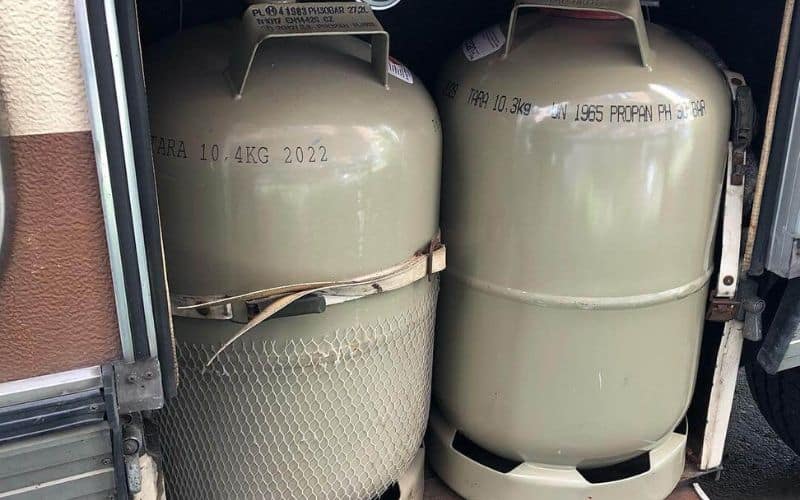
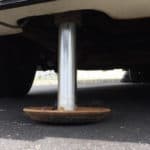
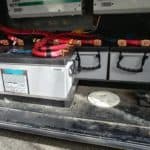
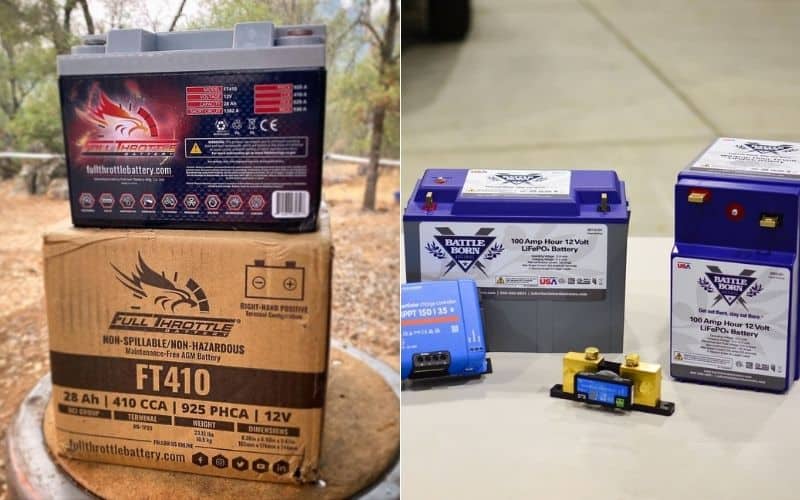
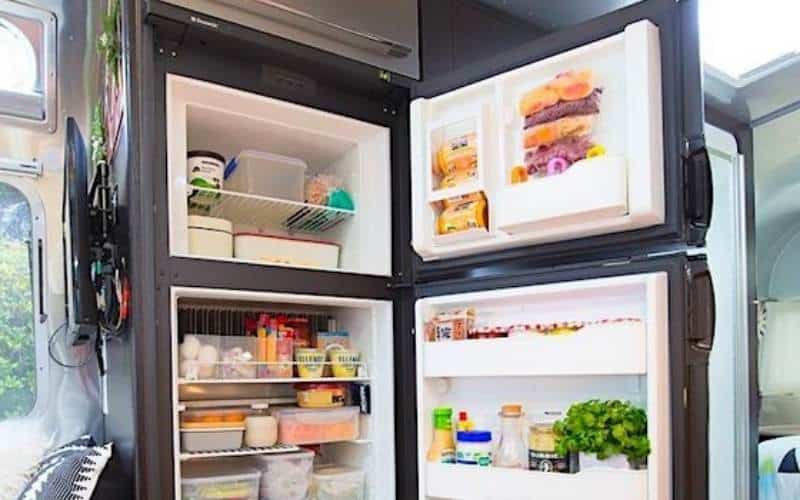
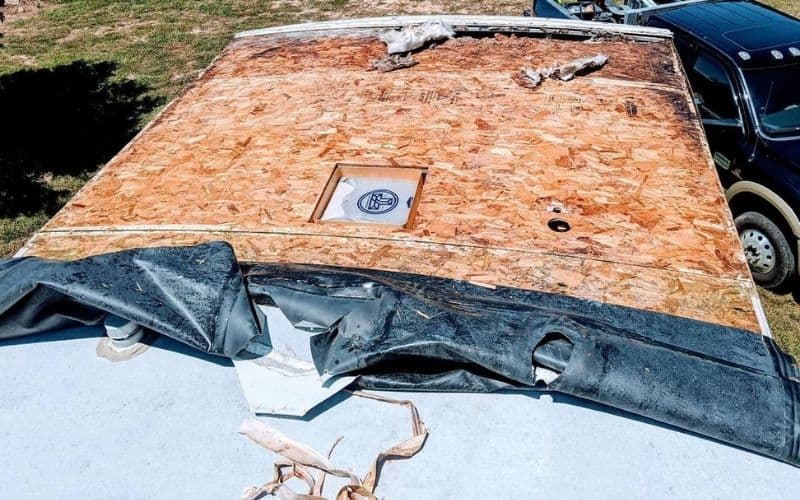
4 Comments
Suzanne Deneise Button
2 years agoWell it didn’t answer my question, my propane is flowing to the heater and water is hot but no gas is getting to my stove… its Thanksgiving and no gas to cook with. Batteries are clean related is good lines see. To be good no smell of propane leaks, I have a 2004 sprinter travel trailer. It worked just fine until we ran out of propane. Had to get an exchange, thought it might be the TANK, so returned it and got another still the same.. HELP!!!!
Maury O.
2 years agoAll over the Internet there is bogus information, including in your article, about the propane system excessive flow check valve. What that valve does and where it is located is very often incorrect in online articles.Telling people to open their propane cylinder valve very slowly is bad info! I don’t know how this all got started…perhaps this info was mixed up with some older or different propane systems. This bogus info has propagated all over the Internet in articles and on RV forums.The following is what the excessive flow check valve is really for, how it functions and where it is located. In a DOT propane cylinder-fed RV propane system the excessive flow check valve is located in the pigtail hose ACME nut that connects to the cylinder outlet. Anytime the pressure has been depleted in the system, and you open the cylinder valve, gas rushes into the system. “By design” the excessive flow check valve is activated by the rush of gas and closes off approximately 90% of the gas flow. The 10% gas flow that continues is for the purpose of pressure checking the system. If the system has no leaks the pressure will build up and equalize across the excessive flow check valve and the valve will reset automatically and make 100% gas flow available.Telling people to open their cylinder valve very slowly is wrong and could fool the excessive flow check valve into not activating and failing to detect a propane leak if one was present. That would mean that 100% gas flow would be available to the leak. That is dangerous! The cylinder valves should be opened normally and NOT very slowly. If you have your propane system pressurized while traveling and an accident or road hazard breaks a propane line there is nothing in the system that will shut off all propane gas flow. The excessive flow check valve will activate but will continue to allow approximately 10% gas flow, which can feed a pretty big fire. In this event the cylinder valves should be closed manually as soon as possible when you suspect a propane leak.There are several other devices that are said to be in either a DOT propane cylinder or the pigtail hose that are misinformation or misunderstood. In the DOT cylinder there is only one part that is installed in/on the cylinder and that is the OPD “assembly.” This ‘assembly contains 5 different devices as follows: 1. The cylinder valve (knob, shaft, o’rings and valve seat), 2. Outlet check valve. 3. The overfill prevention device (OPD float valve). 4. The fluid level indicator (with dip tube and vent screw). and 5. The over-pressure relief valve. This OPD ‘assembly’ and its devices are often misrepresented online. The pigtail hose ACME nut contains 3 devices as follows: 1. A device that pushes open the cylinder outlet check valve to allow propane gas to exit the cylinder. 2. The excessive flow check valve (primary purpose is to pressure check the system), 3. A plastic ring designed to melt in the case of a fire causing the complete shut off of gas flow. Online, when someone has no gas flow, it is often written that “You likely accidentally activated your excessive flow valve (often called a shutoff or stop-flow) by opening your cylinder valve to quickly. You cannot activated your excessive flow check valve accidentally!! It is designed to activate every time you open your cylinder valve into a low or no pressure propane system. Opening your valve slowly can only serve to fool an important safety device.
It is possible, I guess, for the excessive flow check valve to “Fail” and not allow any gas flow at all. However, I have never seen this happen. Most failures of the pigtail hose are caused by over tightening and crushing/cracking the over-temp plastic ring that is designed to melt during a fire. That would shut off ALL gas flow but you are not going to be able to reset that. If you suspect a pigtail hose failure replace it or, if dual cylinders, try the other cylinder. If the other cylinder is empty switch sides with the cylinders or the pigtail hoses. Don’t open your cylinder valve very slowly and chance fooling an important safety device! The excessive flow check valve is likely the most misunderstood part of the DOT cylinder-fed propane system.
Sandy Welch
2 years agoI am getting gas flow to the stove, but not to the refrigerator or to the propane generator. The fridge works on electrical power. When we bought the RV, the propane tank was empty, and we had it filled. However, no flow to the generator or fridge. I took the RV to a service shop where it stayed for 3 weeks, with no repair, so I picked it back up. They had taken the generator out to work on the generator, but could only come up with “no fuel getting to the generator”, and they couldn’t identify why. At the time, I didn’t realize the fridge also was not working on propane.
Kevin Tuel
1 year agoHi, i am getting propane to my hot water heater but not my stove or oven? Any ideas on what to check. I have checked all the breakers and fuses.